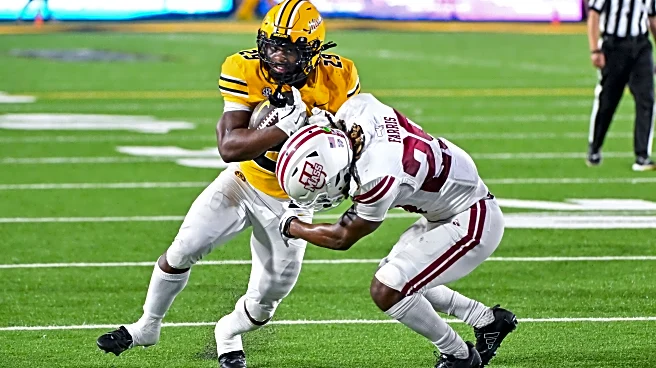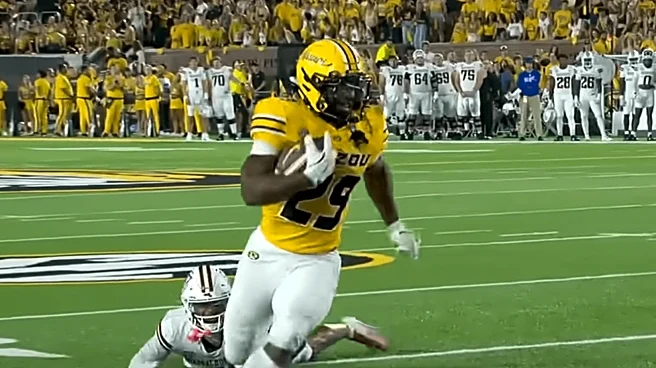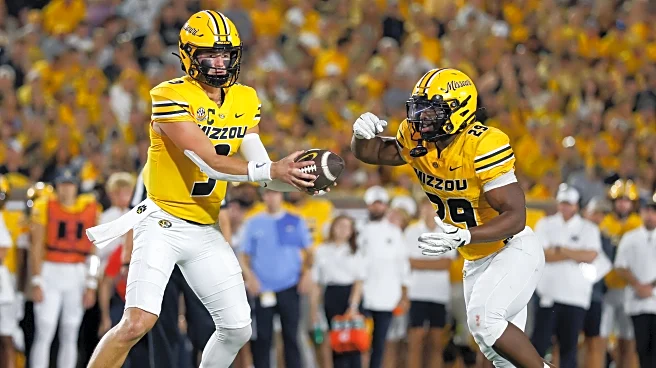What's Happening?
Ahmad Hardy, a running back for Missouri, is making significant waves in college football with his outstanding performances. Hardy has become the nation's leading rusher, amassing 730 yards over five games, surpassing his closest competitor by over 100 yards. His recent performance against UMass, where he gained 130 yards and scored three touchdowns, has further solidified his position. Notably, Hardy has achieved five consecutive 100-yard games, a feat last accomplished by Hall of Famer Joe Moore in 1969. His ability to gain yards after contact, with 544 of his total yards coming this way, and his knack for forcing missed tackles, averaging nearly 10 per game, are key factors in his success.
Why It's Important?
Ahmad Hardy's rise as a leading player in college football is significant for several reasons. His performance not only elevates Missouri's standing in the sport but also highlights his potential as a future professional athlete. Hardy's ability to consistently deliver high-yardage games and his skill in overcoming defensive challenges make him a standout player, potentially attracting attention from NFL scouts. His achievements could also inspire other players and contribute to Missouri's recruitment efforts, enhancing the team's competitiveness in future seasons.
What's Next?
If Hardy maintains his current pace, he is on track to break Missouri's single-season rushing record of 1,627 yards, set by Cody Schrader in 2023. Continued strong performances could also position him as a contender for prestigious awards, such as the Heisman Trophy. As the season progresses, Hardy's impact on Missouri's success will be closely watched, and his performances could influence the team's strategy and game planning.
Beyond the Headlines
Hardy's success underscores the importance of resilience and skill in sports, particularly in overcoming physical challenges on the field. His ability to gain yards after contact and force missed tackles highlights the physical and strategic aspects of football that are crucial for success. This development also reflects broader trends in college sports, where individual excellence can significantly impact team dynamics and outcomes.











